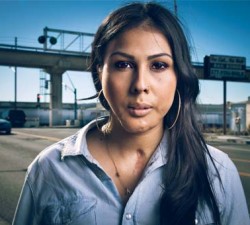San Francisco Magazine
With murders up, the police force depleted, and a mayor under threat of recall, 2011 was a very bad year for Oakland. To stem the tide of violence, former victims are stepping up to take care of their own. San Francisco Magazine details how Youth ALIVE! is making a difference in Oakland with their Teens on Target, Caught in the Crossfire, and Khadafy Washington Project programs.
No Escape, No Surrender
San Francisco Magazine, March 19, 2012
By James O’Brien
Read the full story.
Excerpt:


All day long the father had been asking for reassurance. He didn’t want the body embalmed before he saw it. He was a tall man, lean, a laborer with huge hands and an Island accent so thick, he was hard to understand. As she negotiated the body’s transfer from the morgue to an Oakland funeral home, Marilyn Harris, who aids survivors of homicide victims, instructed the mortician, “Don’t embalm him, OK? But make sure he looks nice for the father.” Harris was worried that the wound might show. We’d been to the morgue in the morning, but only to learn details of the killing and to retrieve some personal items; you’re not permitted to see the body there. Instead, we met with a sheriff’s deputy in a grimy room with a box of tissues on the table.
Throughout the morning the father had been calm, while the victim’s young fiancée hovered around the edges of composed. She desperately needed to go into shock but so far had insisted on experiencing every moment of this dreadful day. When they were told that the victim had had a weapon on him, that he’d died in a gunfight, the fiancée shook her head. The father uttered only the word No and jerked his head back, as if the deputy himself had pulled a gun. Soon the deputy began taking the victim’s things out of a large envelope: his wallet, a lighter, some dollar bills, a tube of lip balm. That final item was the last straw; the fiancée began to sob.
This was the first time I had accompanied Harris, who has been doing this work for years, and I kept looking to her for guidance on how to act. I thought she might try to comfort the young woman, but she stayed in her chair; she knew this pain was inevitable and necessary. I’d witnessed grief and suffering in my life, but nothing so tense and despairing as this. I was here as a writer, and the family knew that and had been very generous in the midst of their torment—but in this raw moment after the gunfight revelation, I began to feel like a voyeur. Quietly, I stood up and left the room.
That afternoon, we met at a West Oakland mortuary. The body was here, and it was time to see it. We walked together into a soulless chapel with a red, threadbare carpet and a white, industrial-size bucket of laundry detergent sitting out. The legs of the six-foot-nine-inch corpse extended far beyond the edges of the rusted embalmer’s table. A wrinkled white sheet covered his body. Another sheet, carefully folded, covered the cleft the coroner’s autopsy had left in the back of the victim’s skull. (The coroner always examines the brain.) Only the dead man’s face was visible. The father loomed over his prostrate son and meditated. The fiancée moaned and knelt to pray. Soon the father began to lift an apparently improvised lament to heaven, imploring Jesus to fill his son’s lungs with oxygen. He prayed to the Holy Ghost. Cried “Hallelujah.” In between prayers he instructed his son to rise and walk, addressing him by name, sternly, the way you might yell at a sleepy kid who’s going to be late for school. Harris and I stood in the back, heads bowed.
Read the full story.